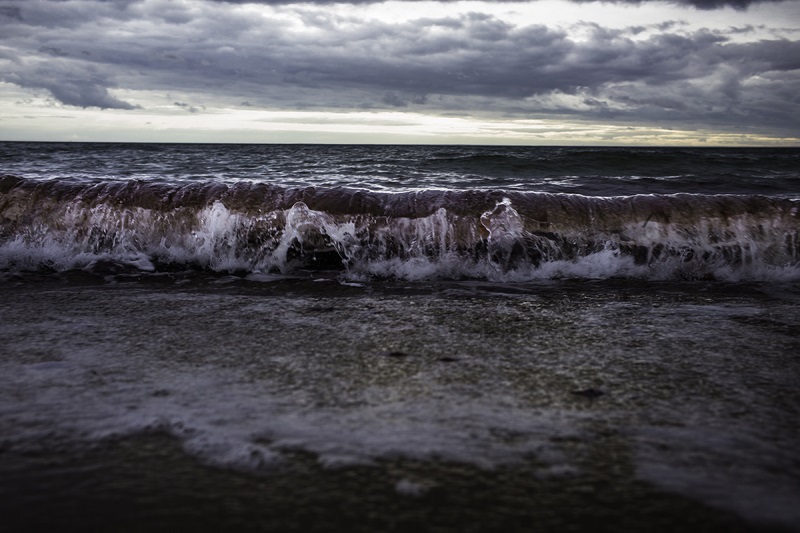EarthTalk®
From the Editors of E – The Environmental Magazine

Red tide may be a naturally occurring phenomenon, but it is likely exacerbated by all the pollution and fertilizer flowing off our land. Credit: Han Lei Photo, FlickrCC.
Dear EarthTalk: What is “red tide” and is it caused by pollution or human activity? — Tamara G., Los Angeles, CA
Red tide is a phenomenon that occurs when algae in the ocean reproduce rapidly and create a large concentration of red pigments in the water, giving it a reddish-brown hue.
These algae, also known as harmful algal blooms (HABs), can produce toxins that are harmful to marine life, including fish, shellfish, and mammals like dolphins and whales. Red tides can also pose a threat to human health if people consume contaminated seafood or come into contact with the water.
According to the National Oceanic and Atmospheric Administration (NOAA), red tides are a natural occurrence that happens in coastal waters all over the world.
They can be caused by a variety of factors, including changes in water temperature, salinity and nutrient levels. However, some human activities, such as pollution and nutrient runoff from fertilizers, can exacerbate the growth of harmful algae and contribute to the frequency and severity of red tide events.
One of the primary nutrients that can contribute to red tide is nitrogen, which is commonly found in fertilizers and sewage. As Dr. David Anderson, a researcher at the University of Wisconsin-Madison who studies harmful algal blooms, explains, “when excess nutrients, especially nitrogen, are added to coastal waters from sources like sewage treatment plants and agricultural runoff, they can trigger explosive growth of certain algae species that produce toxins.”
In addition to nutrient pollution, other human activities can contribute to the spread of harmful algal blooms. For example, boats and ships can carry invasive species of algae and other marine organisms from one area to another, which can disrupt the balance of the local ecosystem and create conditions that are favorable for red tides to occur.
According to the Florida Fish and Wildlife Conservation Commission, human activities that can increase the likelihood and severity of red tide include nutrient pollution, shoreline development that alters water flow, and the release of exotic species.
While red tide is a natural phenomenon, it is clear that human activities can contribute to its frequency and severity. To mitigate the impact of harmful algal blooms on marine life and human health, it is important to reduce nutrient pollution and other forms of environmental degradation that can contribute to the growth of harmful algae.
As Dr. Anderson notes, “reducing nutrient pollution is key to mitigating the impact of harmful algal blooms, and we need to do more to address this problem.”
If you come into contact with red tide contaminated water, you could develop skin irritation on affected body parts and/or a cough/congestion due to breathing in contaminated fumes.
Experts recommend washing off with soap and warm water and heading inside to an air-conditioned space.
And if you eat shellfish affected by red tide’s “brevotoxins” you could come down with Neurotoxic Shellfish Poisoning which can lead to gastrointestinal problems and a reversal of hot and cold sensitivity—if you are worried about something you ate and encounter any of these symptoms, seek medical help ASAP.
CONTACTS:
What Is a Red Tide? https://oceanservice.noaa.gov/facts/redtide.html
About Red Tides In Florida, https://myfwc.com/research/redtide/general/about/
EarthTalk® is produced by Roddy Scheer & Doug Moss for the 501(c)3 nonprofit EarthTalk.
See more at https://emagazine.com
To donate, visit https://earthtalk.org
Send questions to: question@earthtalk.org
